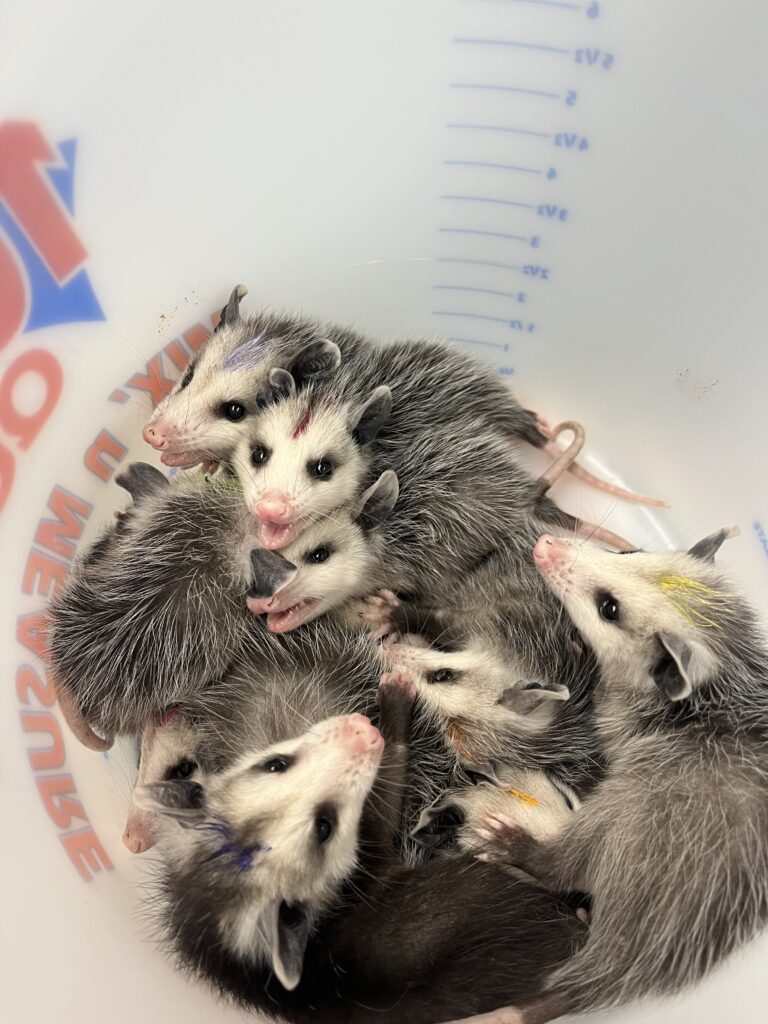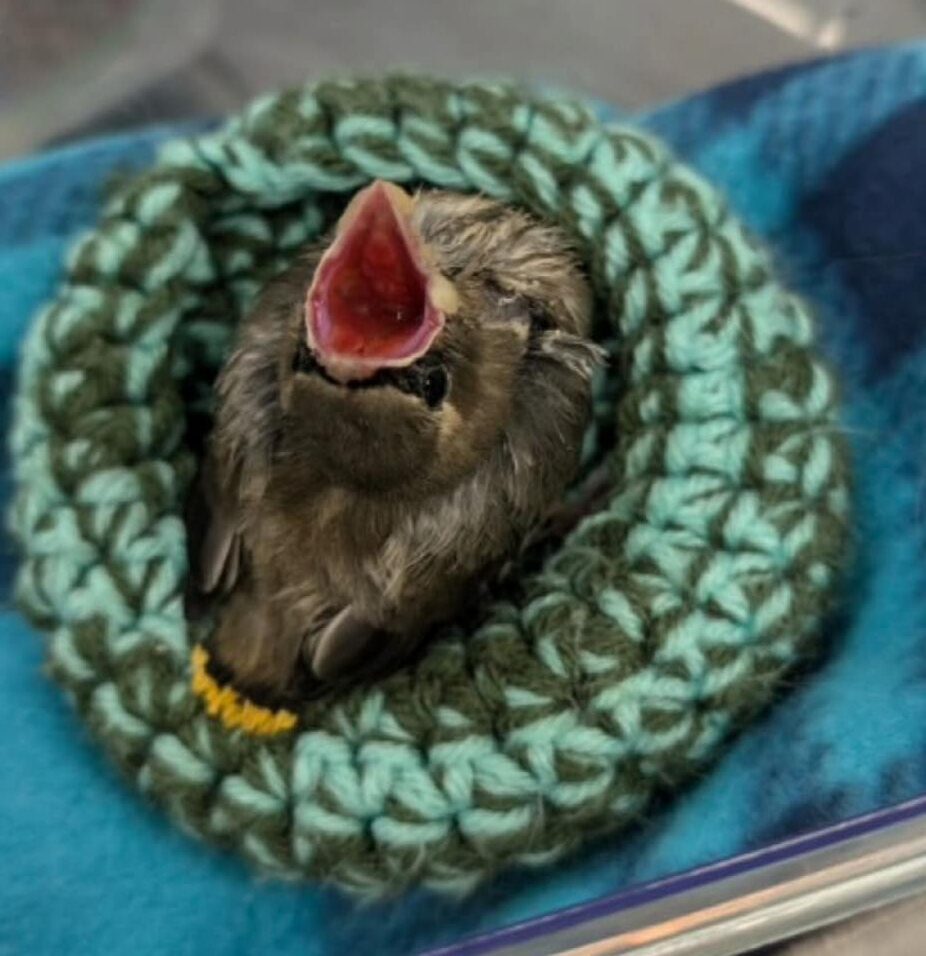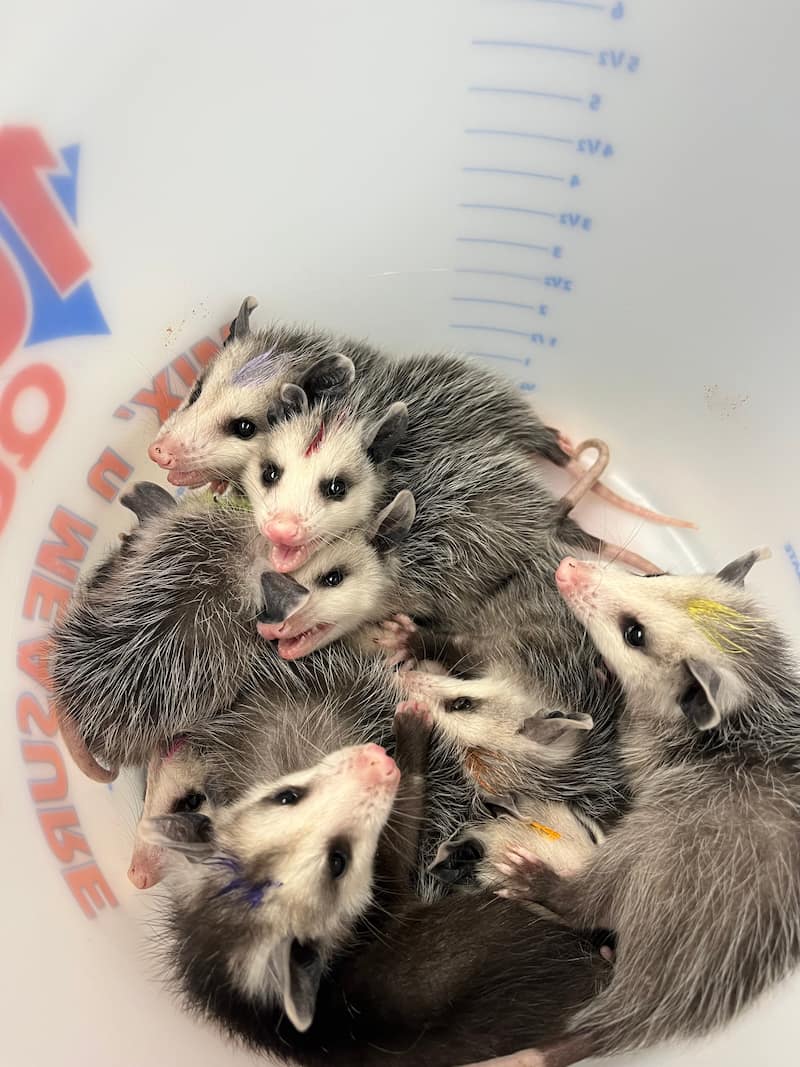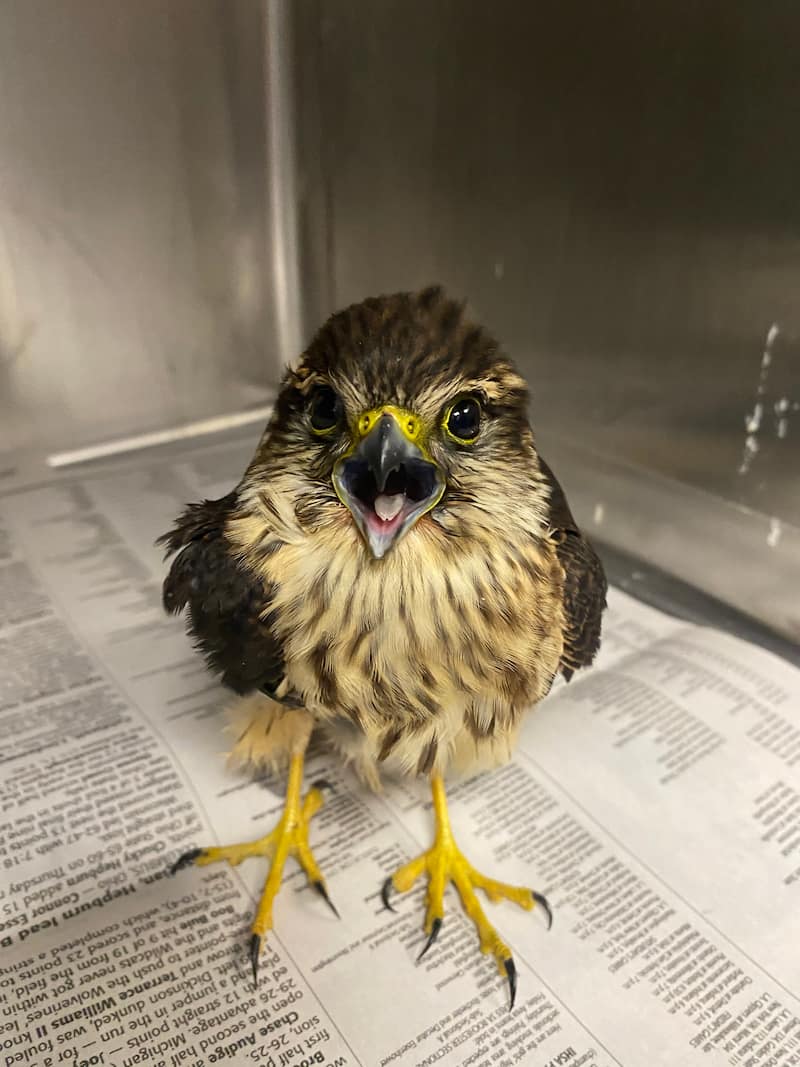Initial Exam
We recently received an adult Virginia Opossum at the Wildlife Medical Clinic. When she arrived at the clinic, none of us knew what to expect. We slowly opened the cardboard box that the finder had carefully transported her in and immediately noticed her injuries, but also were surprised to see she had a pouch full of joey’s (baby opossum). Despite her injuries, she was fiercely protective of her young. Due to her injuries and her defensive nature, we thought it best to sedate her for the initial exam so that it was less stressful for her and safer for us to examine her. While she was sedated, our triage team was able to complete a thorough exam and see the full extent of her injuries. It was determined that our patient was a healthy, but thin, close to one year old female that was more than likely nursing her first litter of joeys. The finder that brought her in believed she had been attacked by a dog, and they were certainly correct.
Assessment of her Wounds
In total, we counted twelve puncture wounds. Eight on the left side of her chest that aligned, almost perfectly, into the shape of her attacker’s jaw, with half of these wounds exhibiting edema (swelling) and deep pocketing (tunneling) of the tissue. Four additional puncture wounds on the right side of her chest, two of which also exhibited edema and deep pocketing. Her chest had extensive bruising, making it deep purple in coloration. Once her wounds were all examined and cleaned, it was time for each joey to be examined to make sure they were not injured during the attack. To our great surprise, none of them had a single scratch on them. They were all perfectly healthy and undisturbed, comfortably nursing in their mother’s pouch.
Mama Fiercely Protecting her Babies

Before we reversed the sedation and began waking our patient up, we administered medications that would help to control her pain and inflammation. While the sedation wore off, our patient was placed in a softly padded enclosure with fresh food and water. Once fully awake, she immediately returned to her defensive posture, warning anyone nearby to stay away from her and her babies. Despite her injuries and young age, she was already demonstrating the typical protective, maternal behavior expected of her species (and many others). Her joeys were likely approaching two months of age as two months is the typical age at which young opossums release their relentless latch on their mother’s teats. In just a couple more weeks, they will start venturing outside of her pouch and even may be seen riding on her back. The average litter size of a Virginia Opossum is 8-9 joeys, and they have a particularly high mortality rate with only 10% surviving to reproductive age (6 months to a year old). In contrast, this patient had a litter of 10 joeys, all of which were in perfect health.
Successful Transfer for Mama and her Babies
The patient and her joeys were examined again after two days of settling in. To my utter amazement, 48 hours was all she needed for nearly all signs of bruising to disappear and for her puncture wounds to close over and scabs to form. The edema and pocketing were gone, and the young opossum looked better than ever. We held her for about ten more days to make sure she was completely healed and then transferred her and her joeys to a licensed rehabilitator for continued care and to give her hair time to grow back before her and her young are released back into the wild.
Happy Mother’s Day to you and to our Mama Opossum!
This was written by Sophia, one of our Wildlife Medical Clinic volunteers (Class of 2026).




